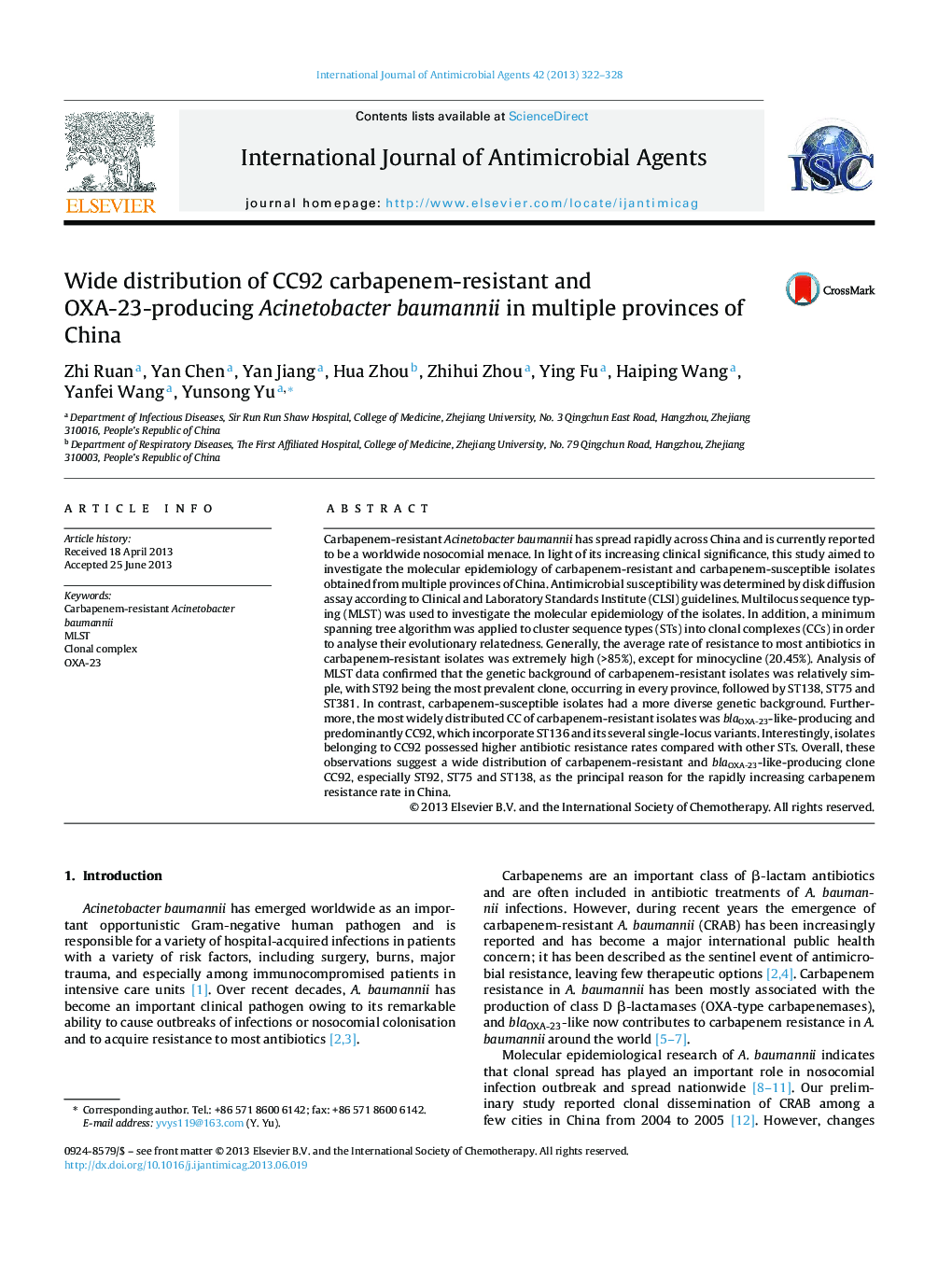| Article ID | Journal | Published Year | Pages | File Type |
|---|---|---|---|---|
| 3358973 | International Journal of Antimicrobial Agents | 2013 | 7 Pages |
Carbapenem-resistant Acinetobacter baumannii has spread rapidly across China and is currently reported to be a worldwide nosocomial menace. In light of its increasing clinical significance, this study aimed to investigate the molecular epidemiology of carbapenem-resistant and carbapenem-susceptible isolates obtained from multiple provinces of China. Antimicrobial susceptibility was determined by disk diffusion assay according to Clinical and Laboratory Standards Institute (CLSI) guidelines. Multilocus sequence typing (MLST) was used to investigate the molecular epidemiology of the isolates. In addition, a minimum spanning tree algorithm was applied to cluster sequence types (STs) into clonal complexes (CCs) in order to analyse their evolutionary relatedness. Generally, the average rate of resistance to most antibiotics in carbapenem-resistant isolates was extremely high (>85%), except for minocycline (20.45%). Analysis of MLST data confirmed that the genetic background of carbapenem-resistant isolates was relatively simple, with ST92 being the most prevalent clone, occurring in every province, followed by ST138, ST75 and ST381. In contrast, carbapenem-susceptible isolates had a more diverse genetic background. Furthermore, the most widely distributed CC of carbapenem-resistant isolates was blaOXA-23-like-producing and predominantly CC92, which incorporate ST136 and its several single-locus variants. Interestingly, isolates belonging to CC92 possessed higher antibiotic resistance rates compared with other STs. Overall, these observations suggest a wide distribution of carbapenem-resistant and blaOXA-23-like-producing clone CC92, especially ST92, ST75 and ST138, as the principal reason for the rapidly increasing carbapenem resistance rate in China.
